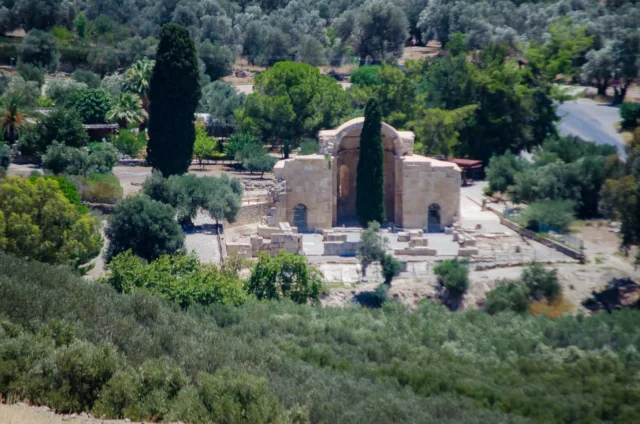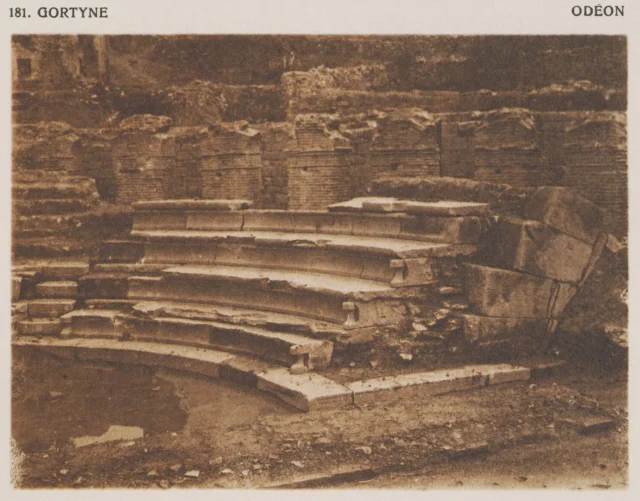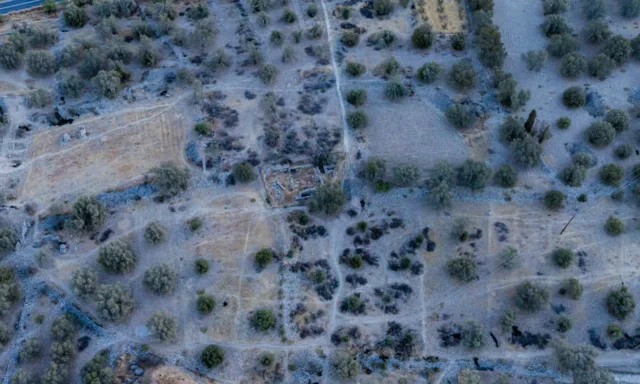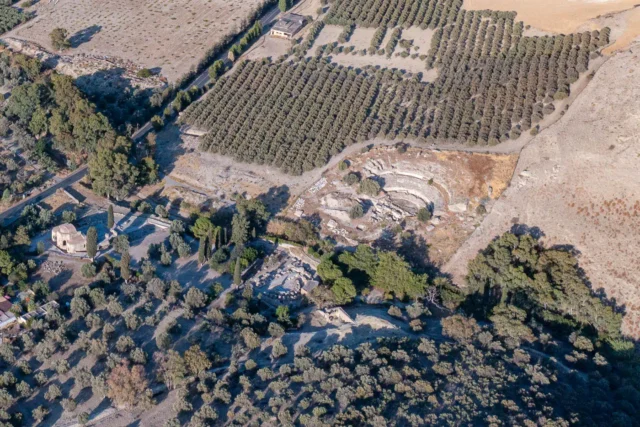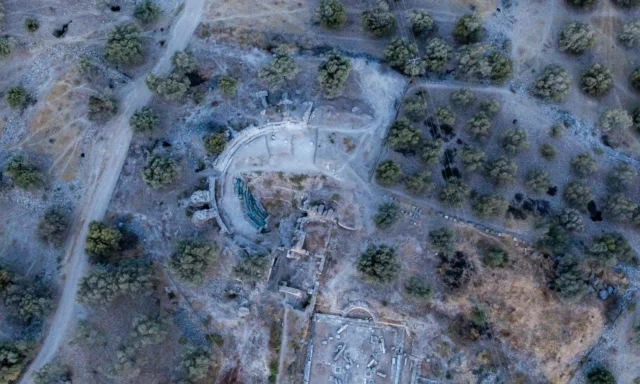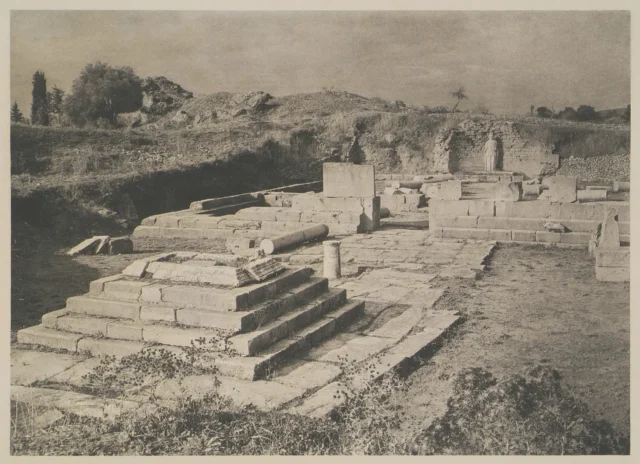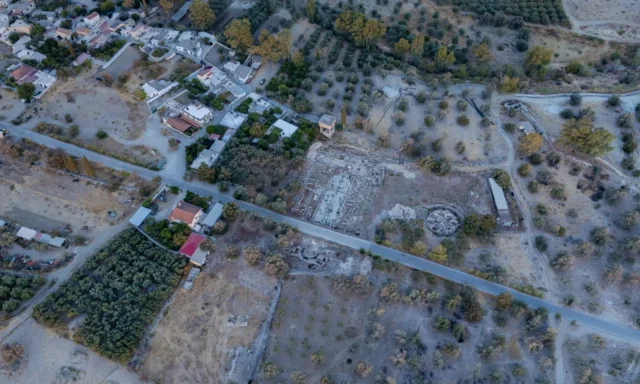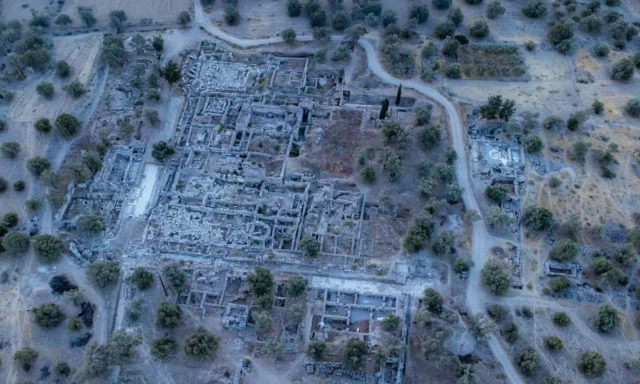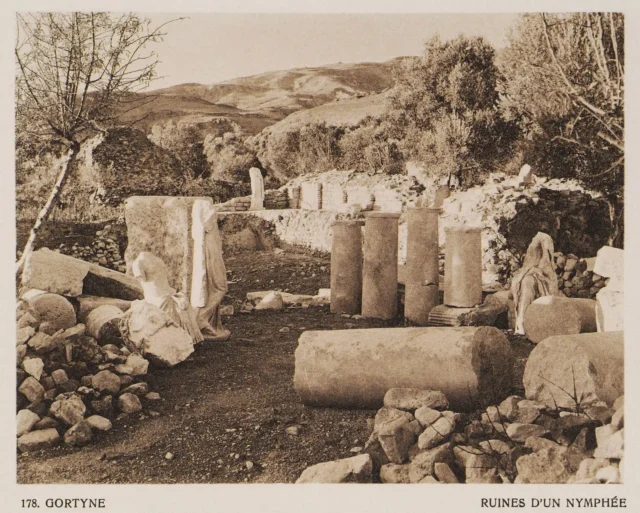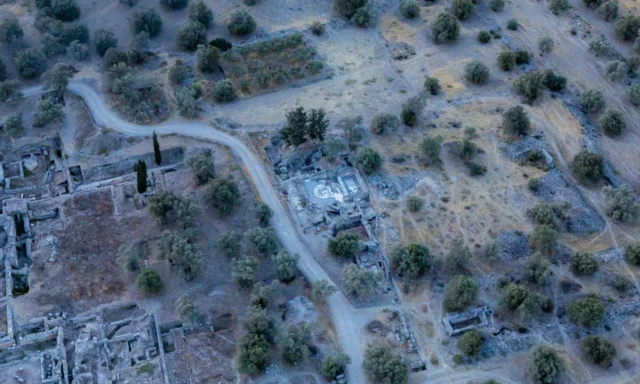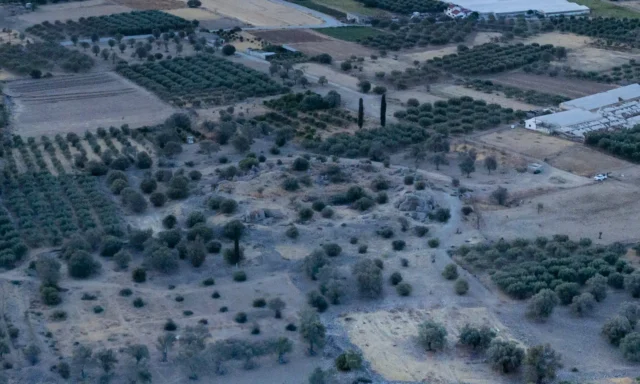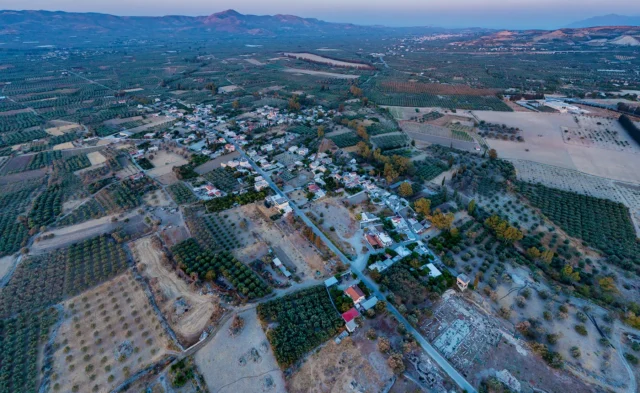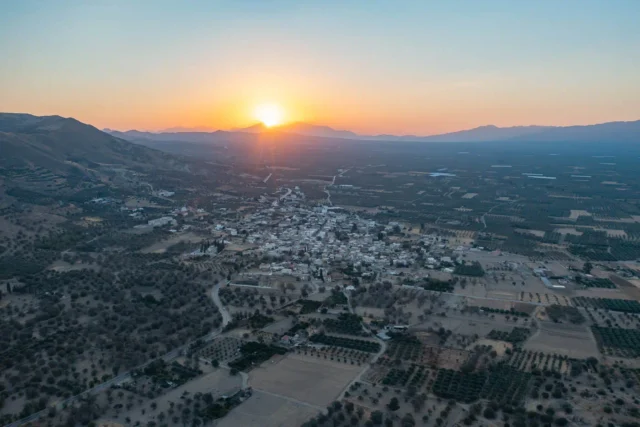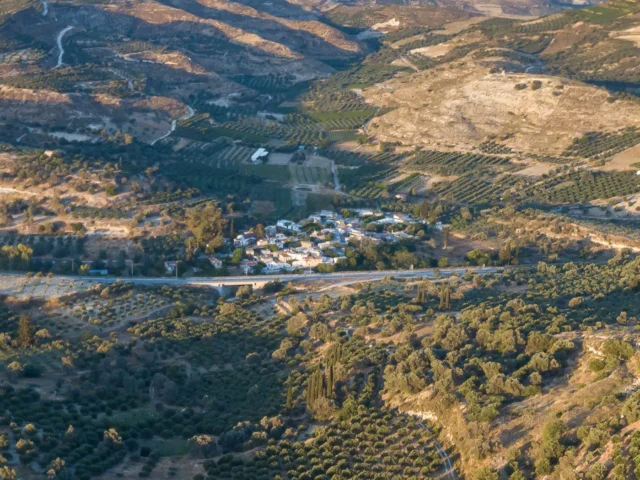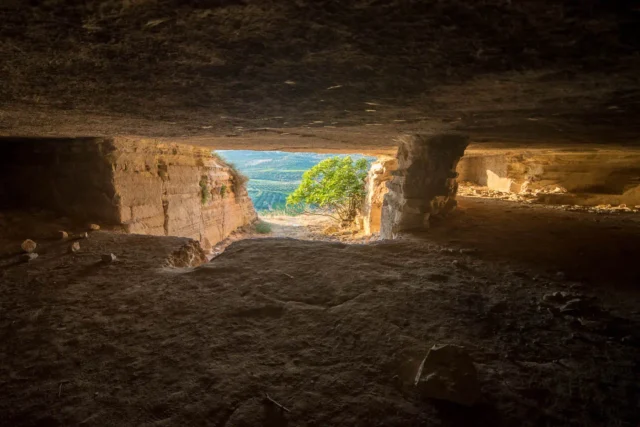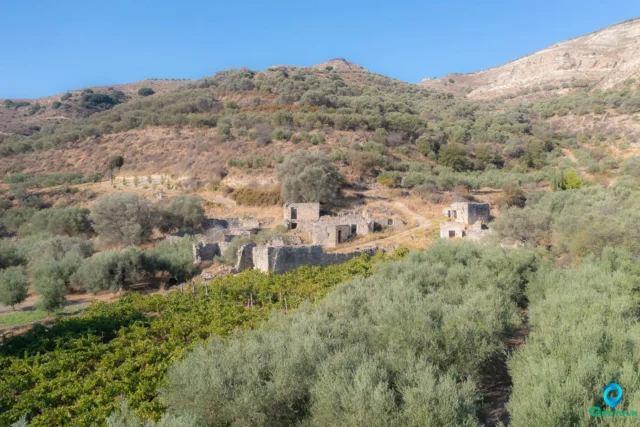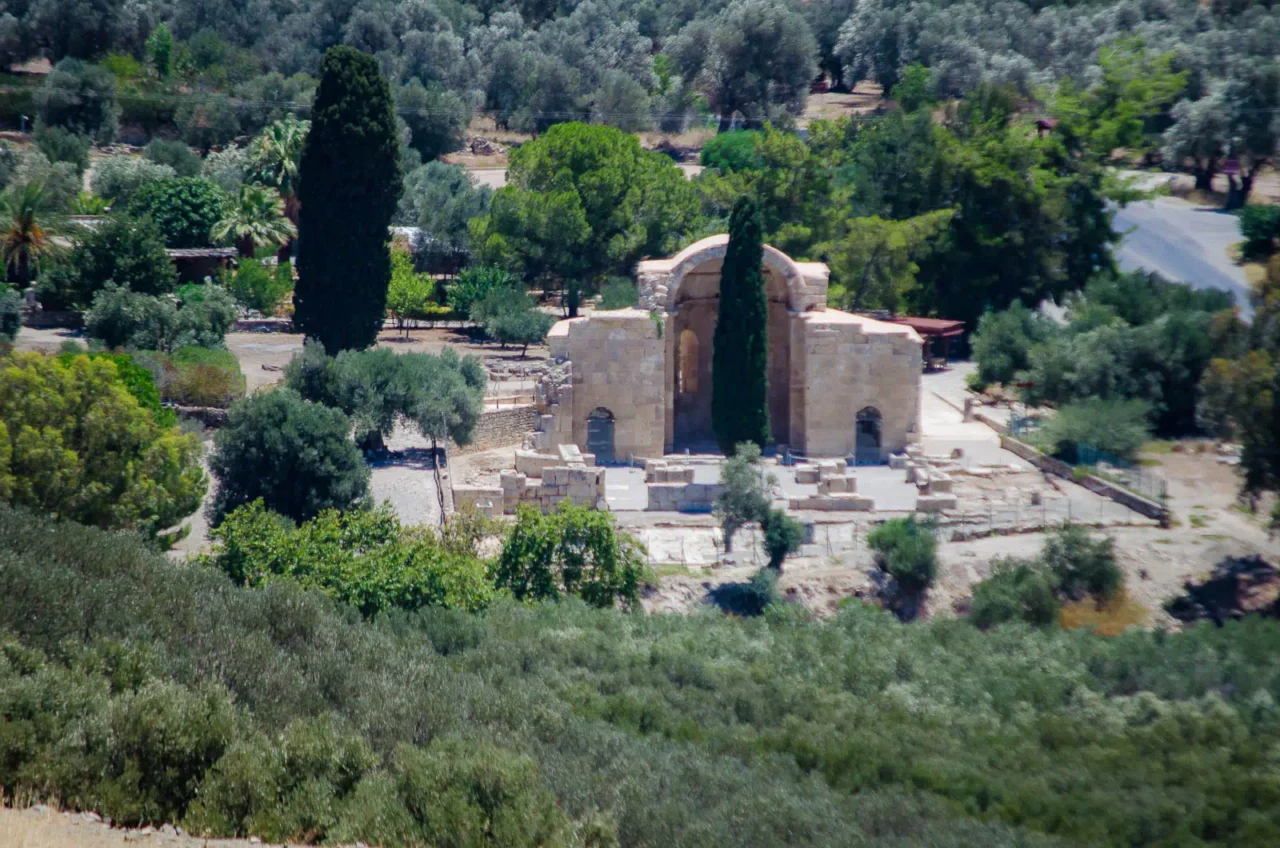
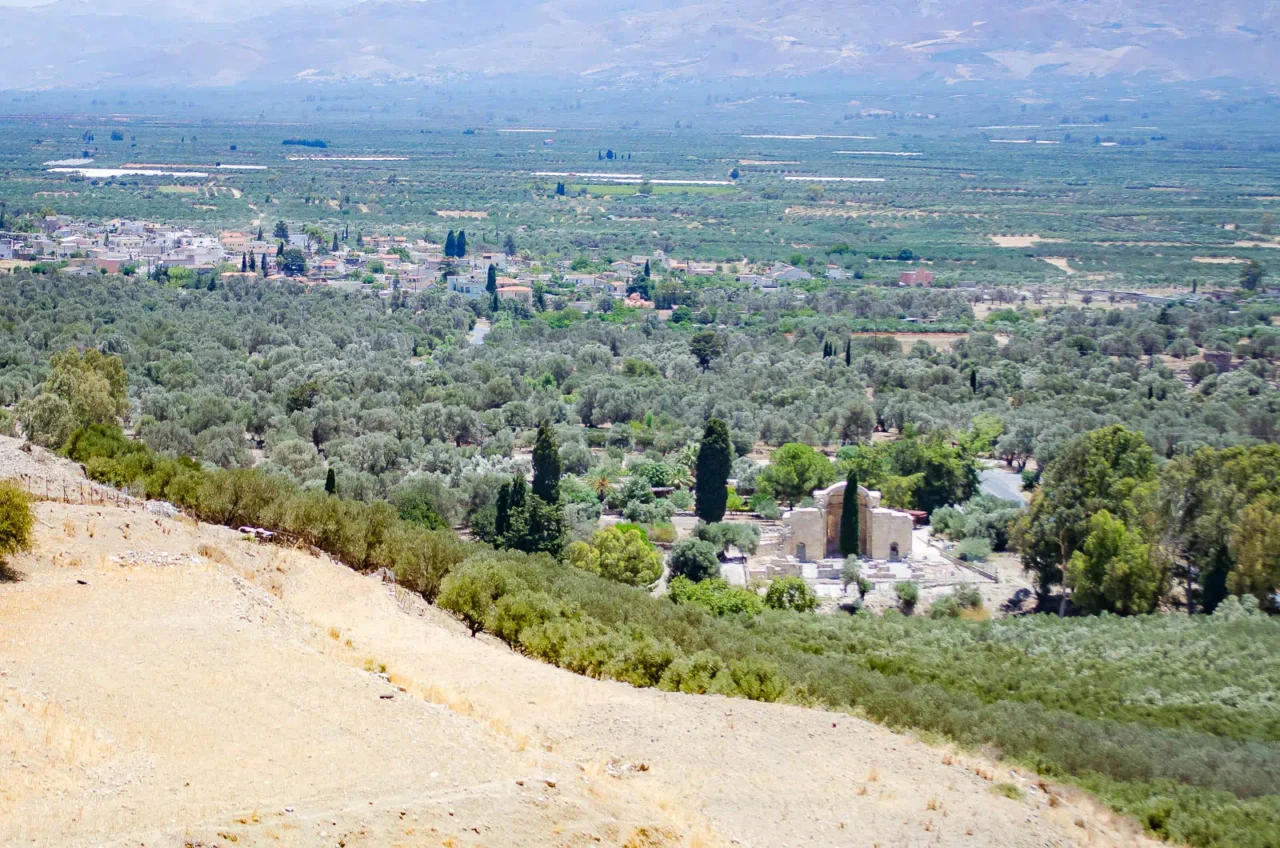
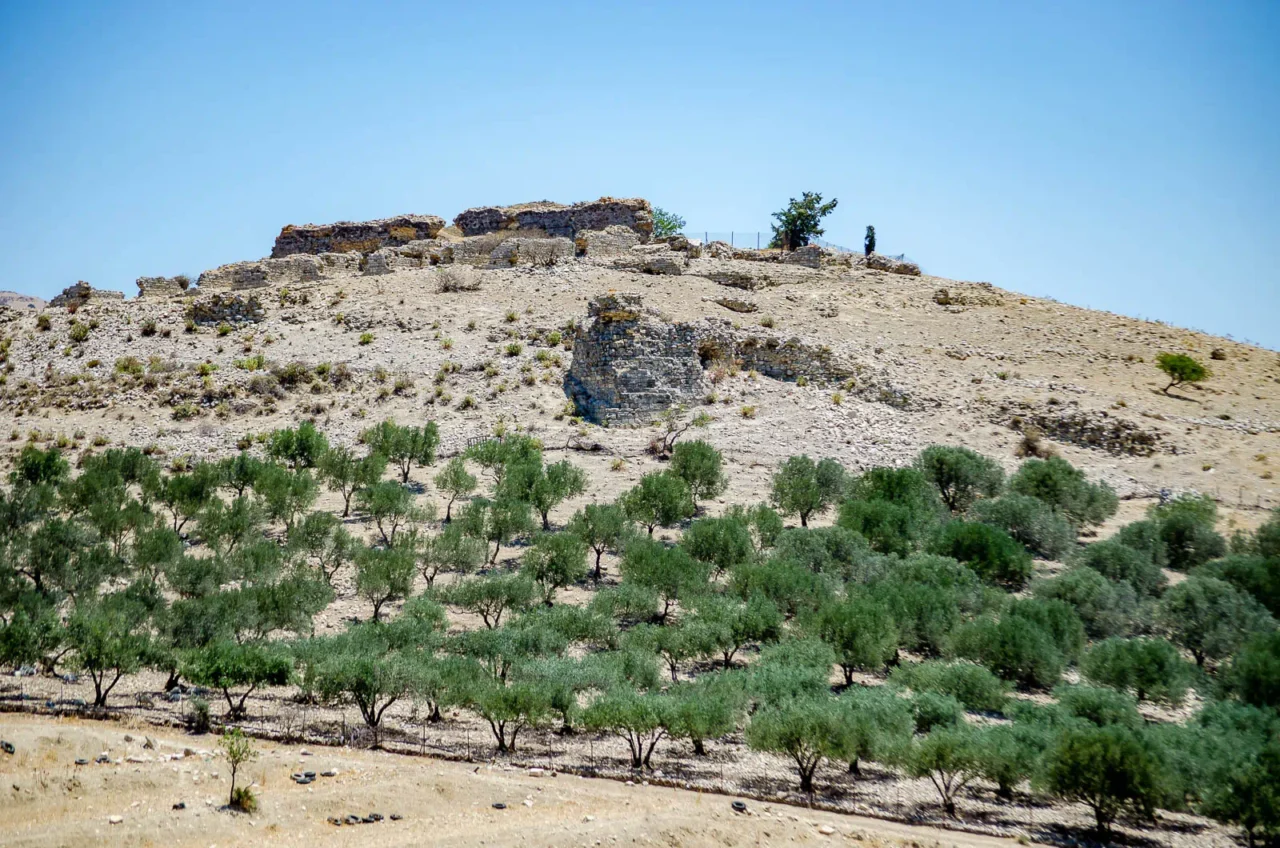
The Ancient City of Gortyna: A Historical Overview
Gortyna, situated on the fertile Mesara Plain in Crete, was a significant city in ancient times, second only to Knossos in its influence and grandeur. The city’s history spans several periods, from the Neolithic era to the Byzantine period, leaving behind a rich tapestry of archaeological remains that attest to its prominence and cultural evolution.
The Early Years: Neolithic to Classical Periods
The earliest evidence of human habitation at Gortyna dates back to the Neolithic period, around 7000 BC. The city continued to thrive during the Bronze Age, witnessing the rise and fall of the Minoan and Mycenaean civilizations. Archaeological excavations have unearthed remnants of settlements, pottery, figurines, and other artifacts that shed light on Gortyna’s early development.
During the Archaic and Classical periods (c. 700-330 BC), Gortyna emerged as a powerful polis, or city-state. It formed an alliance with Knossos, and together they dominated a significant portion of Crete. However, this partnership eventually crumbled, leading to periods of conflict and rivalry between the two cities. Despite these challenges, Gortyna maintained its position as a major political and economic center on the island.
Roman Rule and Transformation
The Roman conquest of Crete in 67 BC ushered in a new era for Gortyna. Recognizing its strategic importance, the Romans designated Gortyna as the capital of the newly formed province of Crete and Cyrenaica. This decision propelled the city into a period of significant growth and transformation.
Under Roman rule, Gortyna underwent extensive urban development. The city’s infrastructure was expanded with the construction of new public buildings, roads, and aqueducts. The Praetorium, the official residence of the Roman governor, became the administrative heart of the province. The city also witnessed the construction of impressive monuments, such as the amphitheater, theater, and the Sanctuary of the Egyptian Gods, reflecting the cosmopolitan nature of Roman Gortyn.
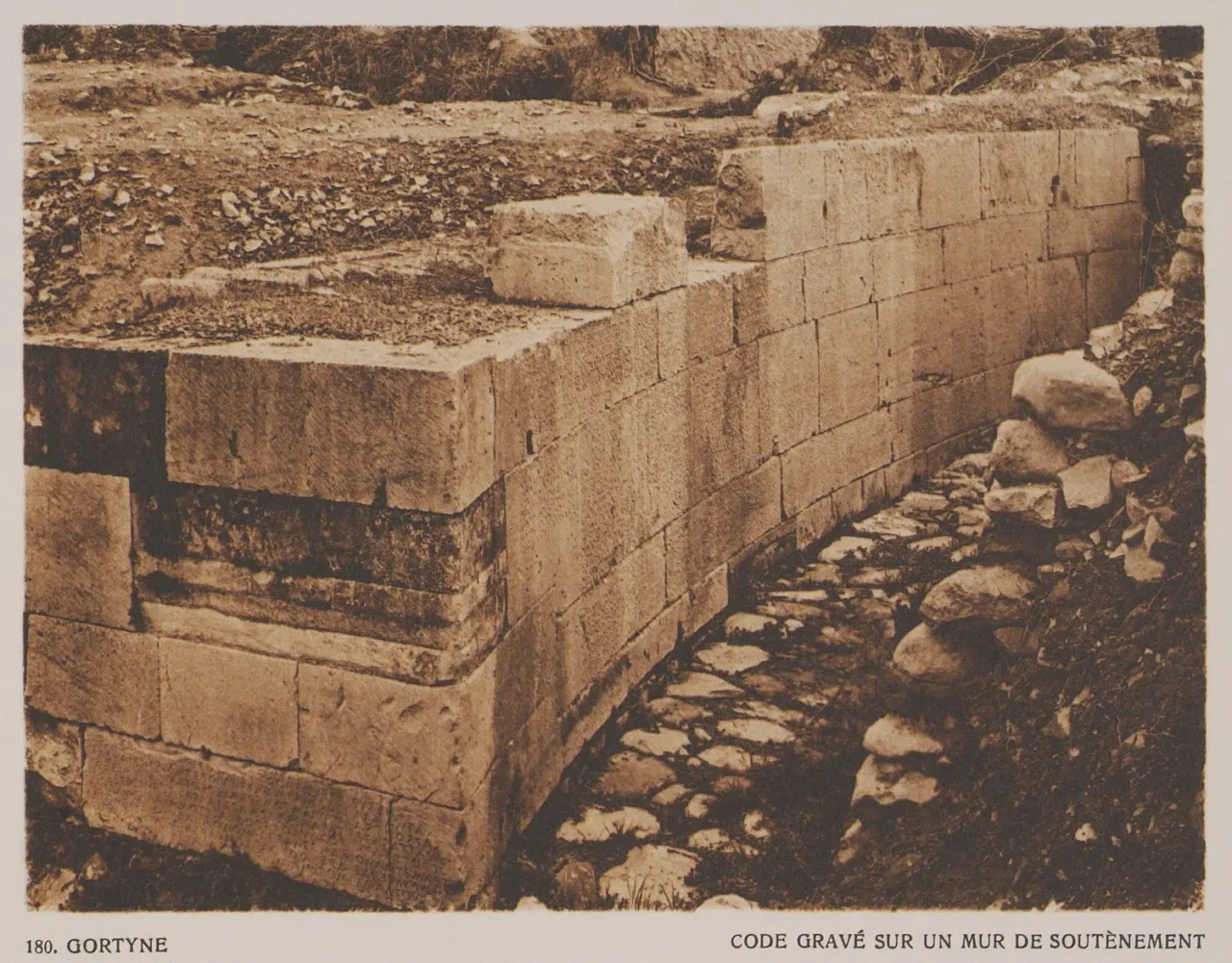
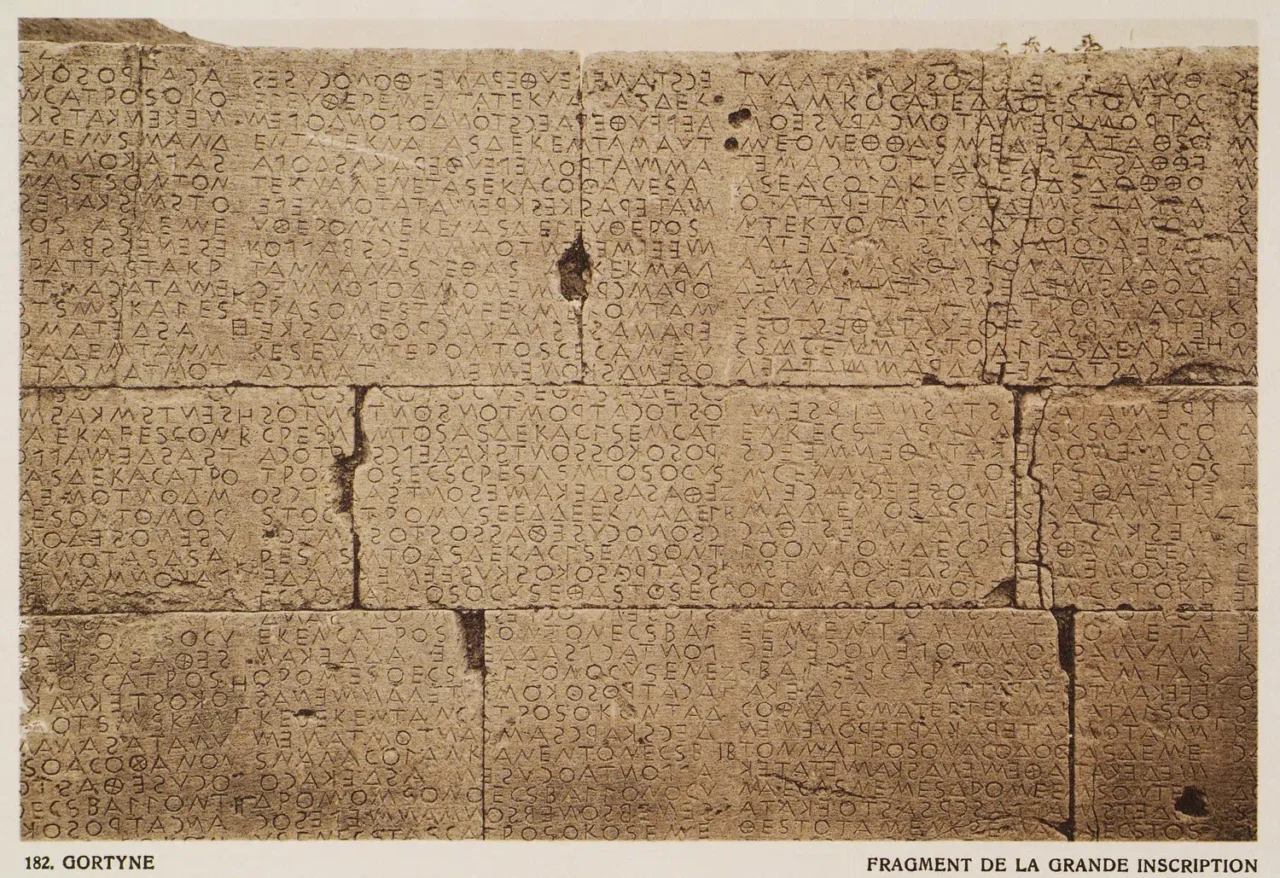
The Gortyn Law Code
One of Gortyna’s most significant contributions to history is the Gortyn code, discovered in 1884. This inscription, dating back to the 5th century BC, is the oldest and most complete known example of ancient Greek law. The code provides valuable insights into the social, economic, and legal structures of ancient Gortyn and Crete as a whole.
Byzantine Era and Decline
The decline of the Roman Empire and the rise of Christianity brought further changes to Gortyna. The city became an important center of early Christianity, with the construction of numerous churches and basilicas. The Basilica of Saint Titus, dedicated to the first bishop of Crete, stands as a testament to the city’s religious significance during the Byzantine period.
Gortyna continued to be inhabited throughout the Early Byzantine period, but its influence gradually diminished. The Arab conquest of Crete in the 9th century AD led to the city’s decline and eventual abandonment. The once-thriving metropolis fell into ruin, its magnificent buildings and monuments slowly reclaimed by nature.
Archaeological Exploration
Archaeological excavations at Gortyna began in 1884 by the Italian School of Archaeology at Athens. These investigations have revealed a wealth of information about the city’s history and development, from its Neolithic origins to its decline in the Byzantine period. The site continues to be a focus of archaeological research, with ongoing excavations and studies shedding new light on Gortyna’s past.
Key Archaeological Sites (not all are open for visit)
These are some of the sites in the Gortyna area.
- The Praetorium: The administrative center of Roman Gortyn, showcasing the city’s importance as the provincial capital
- The Odeon: A Roman building that incorporated the inscribed stones of the Gortyn law code
- The Amphitheater: A large Roman amphitheater located in the eastern part of the city
- The Pythion Theater: A Roman theater with a semicircular orchestra and two entrances
- The Sanctuary of the Egyptian Gods: A temple complex dedicated to Egyptian deities, reflecting Gortyna’s cosmopolitan character
- The Basilica of Saint Titus: An Early Byzantine basilica dedicated to the first bishop of Crete
- The Acropolis: The fortified citadel of Gortyn, offering panoramic views of the surrounding area
The End of an Era
The Arab conquest of Crete in the 9th century AD marked the end of Gortyna’s long and illustrious history. The city was abandoned, and its once-grand structures fell into disrepair. Today, the extensive ruins of Gortyna stand as a poignant reminder of its past glory, offering visitors a glimpse into the rich and complex history of this ancient Cretan city.
Gortyna’s Legacy
Gortyna’s legacy extends far beyond its physical remains. The Gortyn code, with its detailed legal provisions, provides invaluable insights into the social, economic, and legal structures of ancient Crete. The city’s role as a major center of early Christianity also left a lasting impact on the island’s religious landscape.
Today, Gortyna is a major archaeological site, attracting visitors from around the world who come to explore its ruins and learn about its fascinating history. The site offers a unique opportunity to journey back in time and experience the grandeur of this ancient Cretan city, from its Neolithic origins to its decline in the Byzantine period.
Archaeological Site: Key Points
- Construction Period: Neolithic to Byzantine periods
- Location: Messara Plain, Crete, Greece
- Dimensions: The ancient city covered a vast area, with its circuit estimated at 50 stadia (approximately 9 kilometers) by Strabo.
- Historical Significance: Gortyna was a powerful ancient city, the Roman provincial capital of Crete and Cyrenaica, and an important center of early Christianity.
- Current Status: The site is a major archaeological park, with ongoing excavations and research revealing new insights into Gortyna’s past.
It's a shame that there are no signs. A visit actually only makes sense with a guided tour or prior research about this place.
A large part of the city is still underground. Parts are currently being excavated and cannot be viewed.
The special highlight of this place are the thousands of years old legal tablets that were carved into the rock.
the paid site is small and indeed no explanation on site. However, it is easy to find them on the internet and the visit was therefore already interesting.
then you have to go to the other side of the road and walk around the fenced sites where the remains are visible.
walk among the olive trees, always having found detailed explanations on the internet.
the whole family really enjoyed it.
remains of the basilica (which can be seen very well from the road). Most of the temples and other monuments are outside this site, on the other side of the road, among the olive trees....and seem abandoned behind fences.
The entry price of 6 euros is not really justified.
Notes for the prices
There is a ticket that combines the visit to the Messara Archaeological Museum for 10 euros.
For more info about the tickets please also check the Greek Ministry of Culture page.
Notes for the opening hours
ALWAYS check the opening times before your visit. For more info about the opening hours please also check the Greek Ministry of Culture page.













